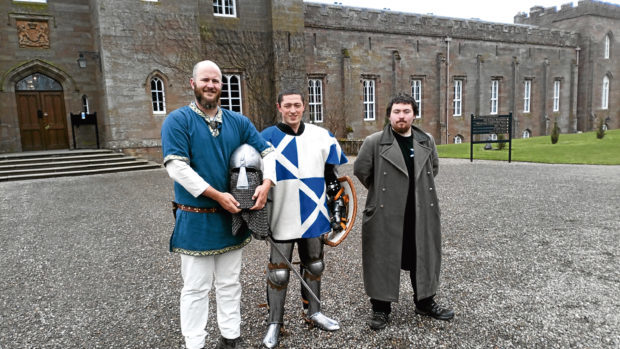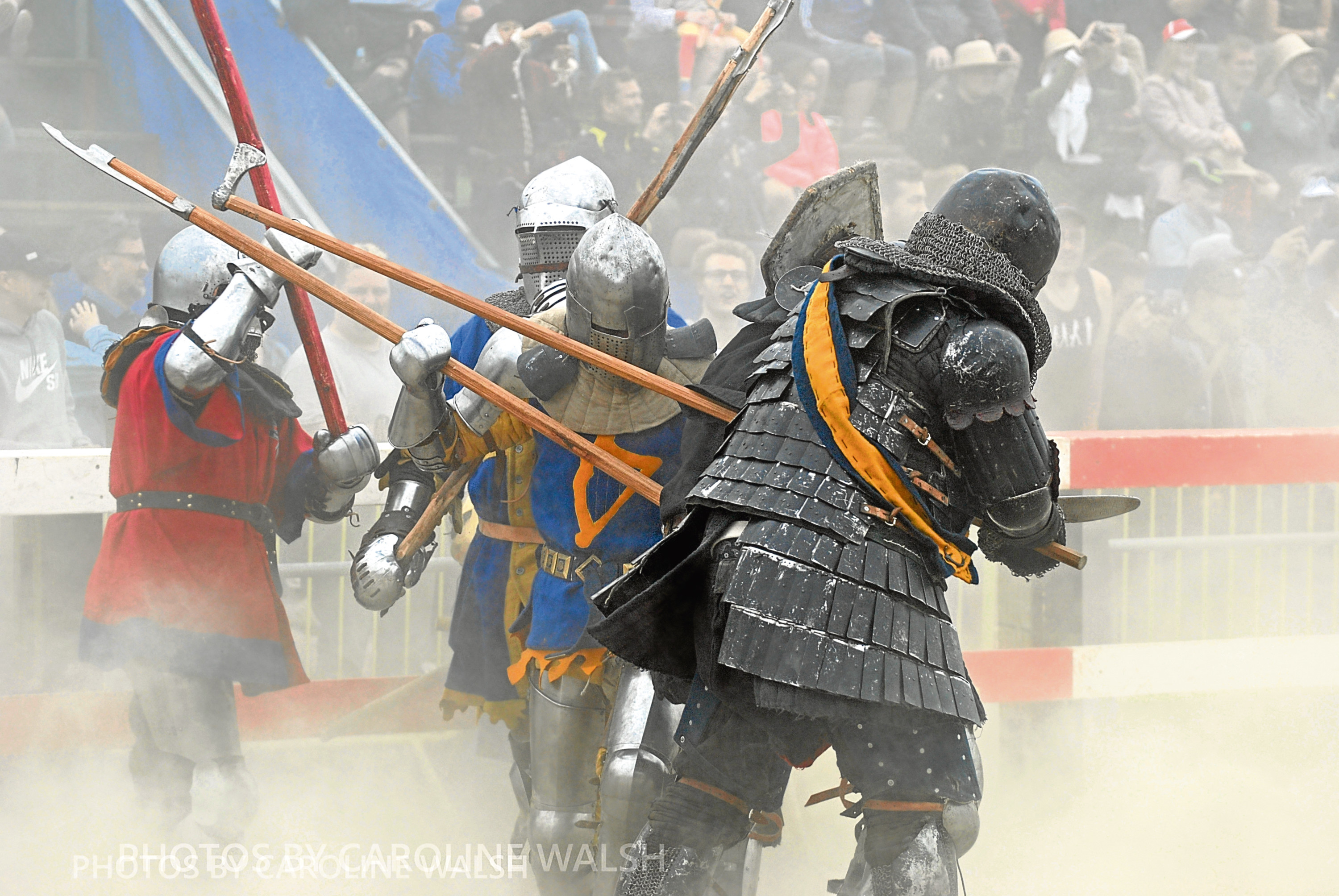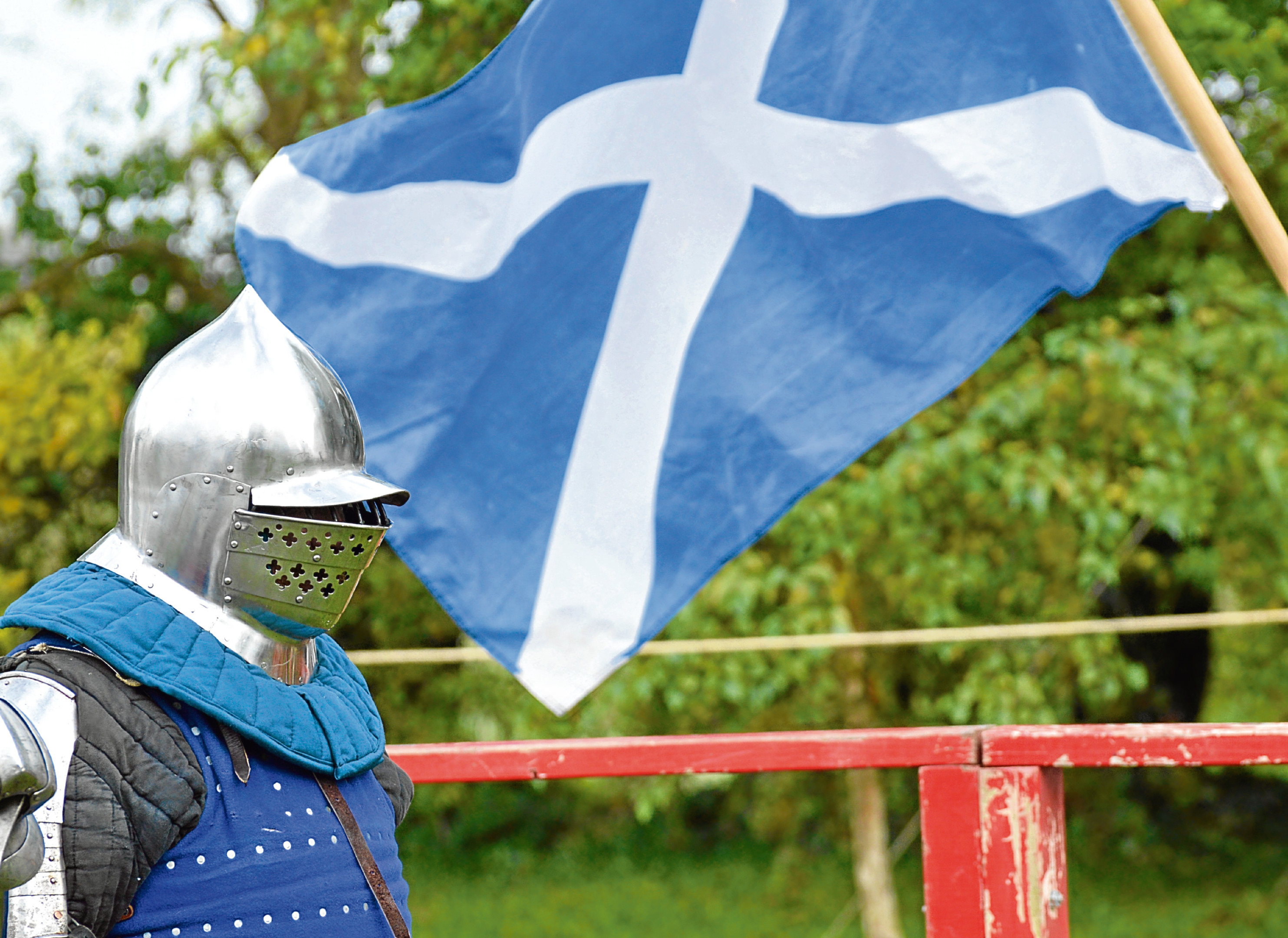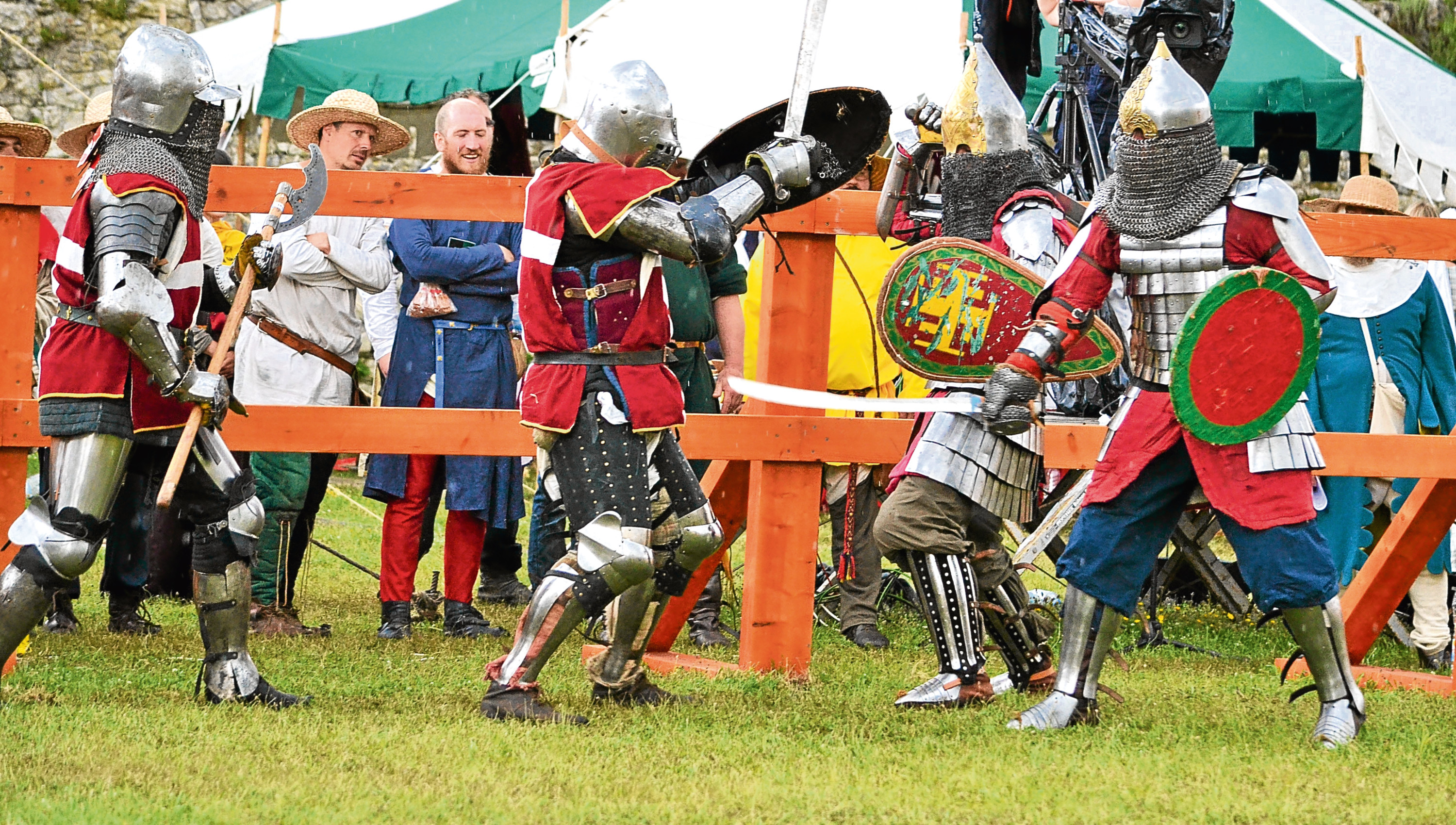At some point in our lives, I suspect every one of us has picked up a long stick and pretended to be a sword-wielding knight engaged in a mediaeval crusade.
But few people would be willing to pack in their jobs, leave home and move elsewhere in order to follow a dream of becoming a modern-day knight…
Next month, historic Scone Palace will be the backdrop for the International Medieval Combat (IMCF) World Championships, a four-day event that is attracting more than 500 competitors and 500 officials from 31 countries heading there to take part in full contact mediaeval battles, duels and team fights in front of 25,000-strong crowds.
Among them will be a trio from the Scottish Knight League representing Team Scotland and taking the championships very seriously, as it’s not just their own honour at stake, but Scotland’s pride…
Becoming involved with mediaeval combat isn’t just an interesting hobby for Jacob Pothecary, from Lerwick, Shetland, it changed his whole life.
“From the late 14th to early 15th Century, tournaments featuring competitive contact for the purpose of sport, with strict rules and regulations, were held,” said Jacob, 25.
“They were a bit like football matches today. Hundreds of fans would turn up to cheer on their favourite knight or swordsman. It was a serious but fun way for them to keep their sword-fighting skills up to speed when not engaged in wars, crusades or battles and people came from all over mediaeval Europe to take part in grand tournaments.
“The term we use for the sport today is mediaeval armoured combat as that is the most accurate representation. It is not a re-enactment but a revival of mediaeval sports being introduced to a new generation.”
Jacob, who describes himself as a “fighter” and will take part in several events at the palace, has been heavily involved in staging the event, even moving from Shetland to Perthshire to devote more time and energy to it.
“I’d lived in Shetland since I was four and never felt there was that much for me to do there,” he said. “Over the years I was never that sure of myself, but since getting involved with a small group in Shetland I’ve gained a sense of belonging – socially and as a fighter.
“It is wonderful being a member of an organisation that has given me a huge opportunity to grow as a person.
“Through the Shetland group, I was invited to attend a tournament. Seeing people take part in duals and in team battles was very exciting and I thought, this is something I want to be involved with.
“I went to train with them one weekend, borrowed some kit, had a sword and shield fight and thought yes, this is for me. A few years ago I’d never have thought I’d be travelling the world and representing my country in world championships.”
Jacob explained those taking part in the sport, in its current form, use historically accurate reproduction mediaeval and early modern armour and blunted weapons made of hardened steel to take part in competitive fights.
Hundreds of people across the world enter into the fights and battles, which are always carried out on foot – no horses or Game of Thrones-style battles are allowed.
Competitors take part in duals, fight in teams of five, 10 and 16, and there’s always a melee at the end when everyone joins in and slugs it out to be the last knight standing.
Jacob said: “There’s a huge misnomer that all armour is the same, but there’s armour for warfare and armour for tournaments. Even in the old days safety was a big issue, so they used blunted weapons as competitors were regarded as sportsmen, the Olympians of the day.”
Standing tall at 6ft 5in in his stocking soles, Joshua Emmerson, 32, looks every inch the part of a brave knight.
Originally from Bermuda and a qualified goldsmith and jewellery maker, he moved to Scotland a year ago, partially to pursue his love of mediaeval combat.
“As a child I was always interested in mediaeval history and grew up on tales of brave knights and battles. My grandfather made my brother and I wooden swords and shields and we’d pull on old motorbike helmets and have pretend sword fights.
“After I finished university I moved to London and found a mediaeval combat group; I went along to try a full day’s practice and loved it,” said Joshua, who was wearing a replica 8th Century Viking-style costume.
“I get a lot out of this sport, not just camaraderie and fun. For those thinking of getting into it, they definitely need to work on their fitness levels as it’s all about strength and flexibility. There’s no use being all muscle if you are unable to move well, so things like yoga, which I have started learning, help.
“I’d recommend trying to find someone with a suit of armour roughly the same size as you. Once you put it on it will change you, but if you don’t want to fight then there are many roles you can get involved with such as being a squire or making armour. Try everything and see what you like the most.”
Dressed head to toe as a knight, Joe Partridge, 24, originally from Milton Leys but now living in Tummel Bridge, attracted lots of attention from youngsters and adults while making this trip to Scone Palace.
“You do get a lot of attention, it’s something you have to get used to,” said Joe, who works as a personal trainer and is involved with skiing at Glenshee.
“Mediaeval combat is now a major part of my life. While I’m not fully clued up when it comes to the history side of things, the sport ticks a lot of boxes for me as it lets me apply the skills I have.
“As a kid I was massively into sport and this evolved into strength conditioning and power lifting. Participants should have the average fitness level of a mixed martial arts fighter.
“The hardest part for me is getting my breathing right. My muscles work fine but the helmet, full armour, sword and shield can add around four stone in weight which changes things.
“I’m not an aggressive person at all but I love sword-fighting and really enjoy the feeling of wearing armour and the camaraderie you get in being part of a group like this.”
IT’S BEEN A HARD DAY’S KNIGHT…
To say I jumped at the chance to spend the day with a knight in shining armour is an understatement. What gal wouldn’t want to meet a gent of the Sir Galahad variety? The knights I met were as chivalrous as I’d hoped, and invited me to step into their world to have a go at wielding a sword myself, something I found surprisingly difficult.
Finding a suitable outfit for me was almost impossible as all costumes are bespoke, usually made in Poland or the Ukraine, and can cost anything from £1,000 to £4,000 for a full suit of armour which can weigh between three and six stone.
Helmets are also made-to-measure, but luckily one gent loaned me his bascinet helmet which roughly fitted. Thickly padded inside and weighing almost a stone, it rested on my collar bone, restricted my vision and was pretty uncomfortable to wear.
Clutching an arming sword made of hardened steel and grasping a wooden tournament shield close to my body, I strode out to face my foe – a poor soul who had been volunteered to let me whack him on the head with my sword.
Using all my strength, I raised my right arm, took aim and brought the sword down with an almighty clang on the side of his helmet. It left a dent but he barely moved, while I was left with a terrific shudder running up my arm.
You clearly need to be tremendously fit for this sport, which I’m not.
Think I’ll stick to wench-like duties…
The largest event of its kind to be held in the UK, the IMCF World Championships, takes place from Thursday May 10, to Sunday May 13. Visitors to the family-friendly event can see live battles taking place in the List (arena) in front of the castle.
The opening ceremony is at 9.30am on the Thursday when competitors walk from the mediaeval camp to the List, escorted by the spectacular stunt horses, Les Amis D’Onno, a sight not to be missed.



